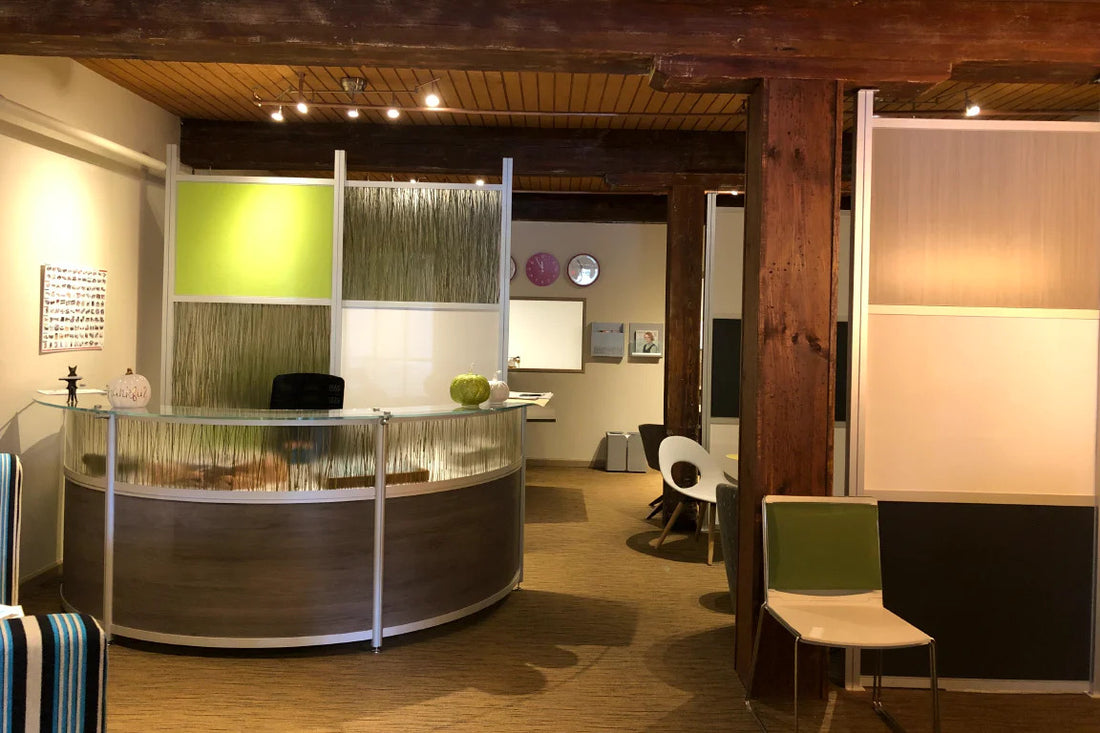The word “modular” has been an integral component of fluidconcepts’ design philosophy since our inception, and we have infused the idea into every single office furniture product we have designed and created. Part of the reason is because we saw the emergence of the modular office space, and the effect it would have on the corporate business world as we moved further into the 21st century.
Our predictions were correct, and modular office spaces have quickly become the new gold standard for internal company operations. In this case, “modular” refers to a versatile office type that accommodates both collaborative spaces, and independent areas for workers to escape to in order to concentrate and do their work. However, the art of organizing such a space is lost on many companies - especially first-time adapters of the model.
THE LITTLE THINGS MATTER
Employees quickly lose focus and enthusiasm when faced with too many distractions, and they can take many forms. For some, it’s the bustle of traffic whistling to and from throughout the main work floor. For others, it involves battles over the thermostat, lack of storage and filing options, and museum-ready technology that can’t keep up with modern work demands.
Whatever the case, organization is the antidote, especially in a modular office space. The idea is to balance two worlds, while fine-tuning the little things that matter to employees who spend a large chunk of their lives at the office. Doing so will eliminate a lot of distractions, while helping employees regain their focus, which boosts productivity for the entire company.
IDENTIFYING KEY AREAS
The key to balancing and organizing a modular workspace involves correctly identifying various areas that employees will use for work, relaxation, or a combination of both. For instance, the main office area tends to be centralized, and focuses heavily on to-and-fro traffic as employees and managers use it as a central communications hub. By contrast, conference rooms are focused primarily on presentations and meetings, but they may also double as quiet work areas.
The traditional break and lunch rooms are no longer just for food, drink and R&R. In the modern age, they’ve become getaway spots for employees to work more comfortably and escape distractions. Understanding the level of traffic, noise and other factors is crucial when trying to organize them. For instance, higher traffic areas may require a mixture of open desking and workstation options, as well as private areas for employees to focus. It’s not enough to rely on areas like the conference room for that kind of thing, especially when communication plays a key role in company operations.
MODULAR MEETS MODERN
A big part of organizing a modular office space involves embracing modern office design trends and aesthetic choices. It’s not just about choosing the right colours; it’s about comfy office furniture, an abundance of natural lighting, and a minimalist approach to storage and organization options that seeks to banish clutter without going bare bones.
The advent of the paperless workplace has had a dramatic effect on this, as well as the rise of portable computing options such as tablets and slim, lightweight laptops. Without the restrictions of being bound to a desktop workstation, employees are free to move about within the office to complete their work. It’s a golden opportunity to organize the modular workspace into a clean, trimmed down and smoothly-run operation.
CHOOSING THE RIGHT FLOOR PLAN
Every workspace is different, which is why it pays to hire a design professional in order to determine how exactly to lay out your modular office. Keep in mind that you’ll want to create a bridge between two different work styles, so flexibility is key. When considering space, try to take into account the office furniture you will be installing, as it can either help or hamper your setup. For instance, non-modular office furniture tends to be more rigid and unyielding, while modular office furniture, such as the kind we produce here at fluidconcepts, can be customized and deployed in a number of different ways.
Not only does modular office furniture complement a modular office design, but it can future-proof said office at the same time. As the company grows, modular office furniture can prevent space cramping and the need to expand outwards, at least for a while. Similarly, modular office furniture employs storage design concepts that are minimalist, yet highly effective. By changing the structure of your office furniture, you can accommodate new employees, hardware and other circumstances that may befall your company before its time. Pushing back a move or expansion can save tens of thousands (if not more) dollars, which can be a big boon for new startups and fast-growing corporations.
CONCLUSION
Organizing a modular office space is quite easy, and all it takes is a bit of pre-planning. The foundations of the modern workplace take care of a lot of the hard work, which allows companies to think strategically, while creating a dynamic and engaging work environment. Couple that with modular office furniture to complement the versatile, freestyle system you’ve created, and your employee productivity will shoot up just as fast as their enthusiasm.
For more information on how fluidconcepts’ modular office furniture can help you set up and organize the perfect modular office space, contact us today. We know exactly how the two work hand-in-hand to create dynamic and enjoyable office environments that retain and attract talent, and wow clients when they walk through the door.


